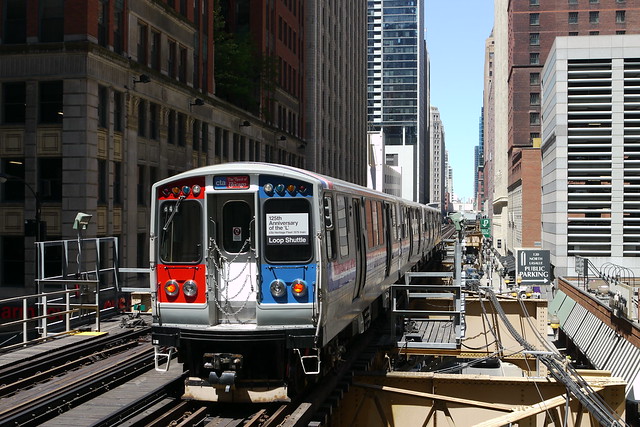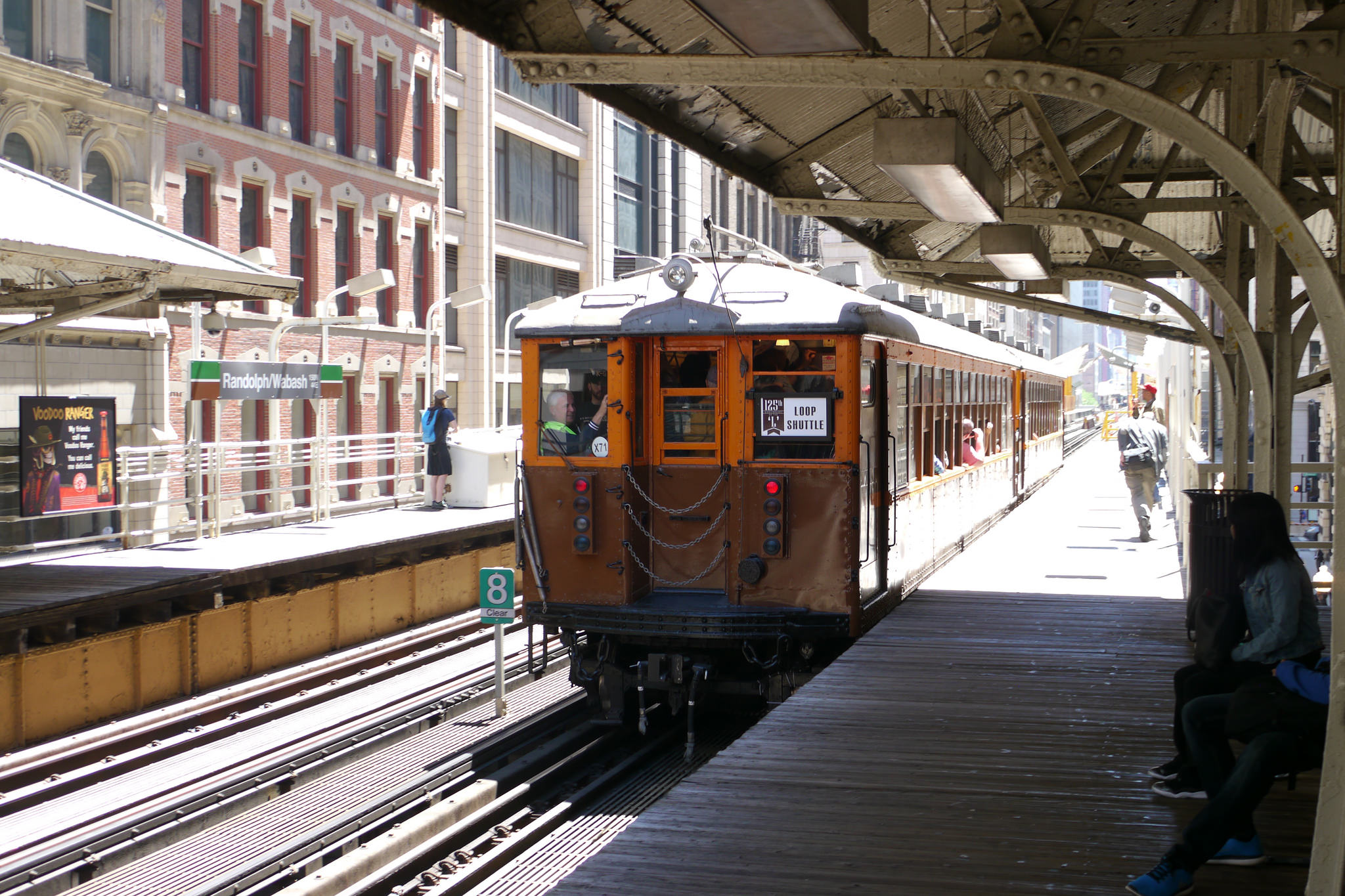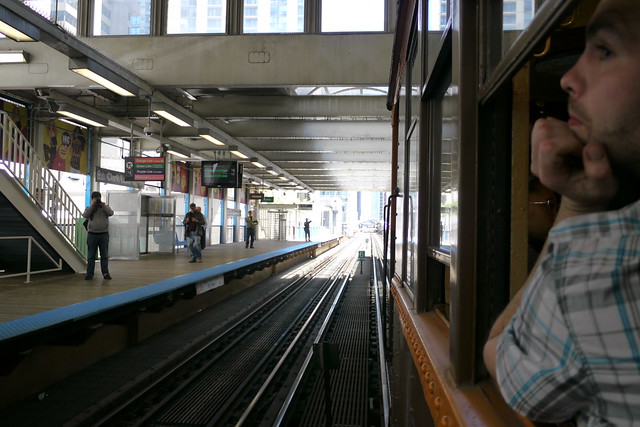The Chicago Transit Authority celebrated the 125th anniversary of the 'L' yesterday by bringing out rapid transit cars built in 1923 and in 1976. The Chicago & South Side Rapid Transit Railroad Company commenced "Alley L" service on June 6, 1892, in an alley east of State Street between Congress Parkway and 39th Street, according to the CTA. The CTA also highlighted its own 70 years of service. The authority was created in 1947 to unify the different bus, streetcar, and elevated companies.
Each train ran around the Loop for 90 minutes, and required a normal CTA fare to ride. On the older train, one CTA worker was dressed in a vintage conductor's uniform, and another explained the train's features and historical facts over the PA. The trains are part of the CTA's heritage fleet that can be chartered for tours, wedding parties, or film shoots.
A lot has changed since the Alley L began. The most significant upgrade was the use of electrified trains instead of steam engine-pulled trains. The next innovation was giving each car its own motor that could be controlled from a single point, instead of using motor cars at the ends. That "electric multiple unit" was invented by Frank J. Sprague, and used first in Chicago. The CSSRTRC put the EMU cars into service just six years after the Alley L began.
What will the next 125 years bring?
The difference in ride quality between the 4000 series train built in 1923 and the 2400 series train built in 1976 is remarkable. The 4000 series train movement is jerky, and the lights flicker when the train passes between separate electrical zones on the track. However, the 2400 series train ride performance is much the same as the current 5000 series trains currently in service on all lines but the Blue Line. The appearance is largely the same, too.

The Blue Line will be getting new 7000 series cars in the next few years. The American subsidiary of a major Chinese train manufacturer recently got a permit to construct a $40 million factory in Hegewisch. These cars' appearance will deviate a little more from the current design than the 5000 series deviated from the previous design seen on the Blue Line. But the new cars still look nothing like state-of-the-art rail cars in other cities. I explored international designs in a post in 2013.
One innovation the CTA should consider adopting is articulated trains, where there are no doors between rail cars. This adds capacity without additional cars, and redistributes passengers for a more even load. In addition, many new subways around the world are either fully or partially automated. Paris has a new automated line, a converted automated lane, and is converting another line to become automated.
What changes would you like to see in Chicago's rail system in the next century? Let us know in the comments section, and enjoy this two minute video of yesterday's event by Streetsblog reader Jack Brandtman.







